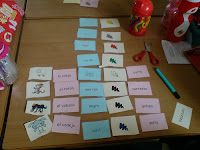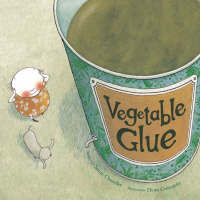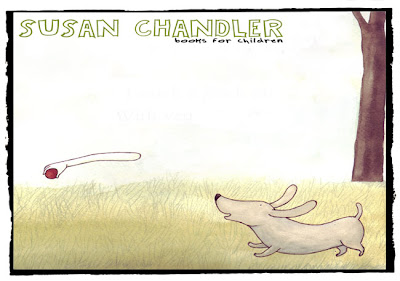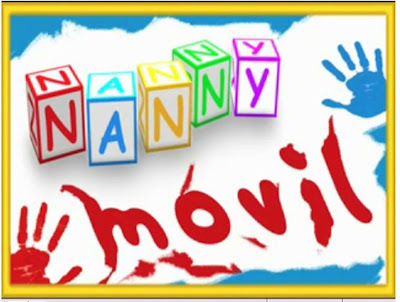¡Vámonos!
I came across an interesting news report via my GoogleAlerts from The Kerryman paper in Ireland, entitled Enthralling tales from afar. The report begins…
 It goes on to say that this is the second time that this type of visit has been made possible by the GoetheInstitut, and that the aim of the exercise was to encourage primary pupils to learn German in a fun environment.
It goes on to say that this is the second time that this type of visit has been made possible by the GoetheInstitut, and that the aim of the exercise was to encourage primary pupils to learn German in a fun environment.
“There has been a growing interest in teaching and learning modern foreign languages at primary level in Europe and research shows how enthusiastic teachers and children are,” Georgia Herlt, head of the language department at the Goethe-Institut Dublin, stated.
“As well as learning languages it helps with cultural awareness and combats stereotypes, and the children are geared up for it when they go to secondary school.”
The visits saw Suse Weisse using familiar and less well known fairytales in German (with explanations in English).
I love using stories to teach primary languages for many reasons. For example;
- familiarity of structure
- familiarity of story
- children enjoy being read to
- making links between English and the language of the story
- you can do all kinds of things with a story – drama, games, jigsaw texts
- using them as a model for production of new stories
- easy to embed sound in story powerpoints to help non specialist teachers
- I enjoy doing the voices ;o)
I could go on!
So I’m all for these visits – when a Year2 class told me that they’d worked out from listening to and reading Rubiales on the Northumberland GfL that Spanish put the adjective after the noun whereas English put it before, I was sold on the use of stories to teach!
Off to see if I can find a Spanish storyteller now…;o)
A beautiful story for the end of October – made me go ‘ah!’
Here are the words in case you want them!
su hermosura y su soledad
caminaba en la niebla sin ver
que un ogro muy triste la seguía
Este amigo tarareaba una canción
y la bruja ocultaba su emoción
En los cuentos de hadas
las brujas son malas
y en los cuentos de brujas
las hadas son feas
así decía la canción
que el ogro cantaba
En el bosque,un día de sol
se encontraron frente a frente los dos
le clavó su mirada
la bruja malvada
para ver si podía
con su magia ahúyentarlo
pero el ogro sonríendo y cantando
el hechizo rompió
La tomó de la mano
las lechuzas callaron
se miraron un rato largo
y el ogro y la bruja se amaron
bajo el sol..
No hay mejor brujería que el amor
la la ra lara la la ra larala!!!
La ra la larala laieee!!!

Avui, estic molt constipada. No puc respirar bé. Tampoc puc pensar – a l’anglès i encara menys a català.
Per això, un conte bonic que m’agrada – i també coneixo molt bé :o)
[PS – In case you’re puzzled, I have a cold. As José Picardo kindly explained when I tweeted my condition yesterday, it’s English that is scatalogical ;o)]
Updated – all resources that still exist for this unit of work can be downloaded here. Hyperlinks within the post to resources in DocStoc no longer work.
As we near half term (and not a moment too soon!) the time has come to report back and evaluate how the four QCA Spanish units I’ve used have gone.
First up is Unit 5 Los Cuatro Amigos which I used with Year 3. It’s based around the story of four animal friends (hence the title) who find an apple tree and have to work together to reach and eat the lovely red apple that hangs on it. You can download the unit from the QCA site and below is the medium term planning that goes with the QCA document.
Scheme of work for Year3 spanish summer – los cuatro amigos
I had been sent a PPT presentation of the story by a kind person on the ELL-forum so we began by me reading the story from the IWB to the pupils and seeing how much they could understand-
- what’s it about?
- who are the characters?
- any words you think you might recognise? how?
- what do you think this might mean?
Then we picked out the words for the animals and added actions suggested by the pupils whilst looking at flashcards (on the IWB and laminated ones!) – again, thanks to another kind on a forum. I ‘d modified them slightly to be double sided with just the image on one side and the word (colour coded by gender) and image on the other side. The lesson continued with pupils showing their understanding through using the actions as we once more read the story. Already, the class were wanting to join in – especially with the ¡Pom, pom, pom! and ¡Yupí! sections!
To finish off, I’d prepared a simple worksheet with copying and drawing activities based on the new vocabulary.
The next lesson started with a recap of the story, using the actions once more to show understanding. As we reviewed the animal vocabulary, we discussed the grapheme / phoneme links for ll, j and z and tried to think of other Spanish words that included them – lots of colours and people’s names were suggested. Then, as suggested in the QCA document, we looked at the word galopa and picked out the other action words, using the pupils’ knowledge of sentence structure etc from their own language,their ability to pick out cognates and their understanding of how animals move! They were a bit puzzled by how sheep move but a bit of acting soon helped them catch on to running. We then used a flipchart to link words and pictures, guess the hidden animal / word etc.
Lesson 3 we revised colours – lots of pupils recalled these well, but many of the ones they remembered weren’t featured in the story eg azul, verde, amarillo. We looked for items of that colour in the room, played ‘Búscame algo …..‘ and then focussed on the story with questions about the colour of the apple and animals. WE did the suggested Hoop game making a Venn diagram with two hoops and putting words from the text into the hoops, their position dependent o n whether they contain ‘e’ or ‘i’ sound – if both, they went in the intersecting area.
n whether they contain ‘e’ or ‘i’ sound – if both, they went in the intersecting area.
eg oveja = e
ratoncito = i
conejito = e and i
The lesson carried on with a game of pelmanism – animal and word, and then coloured splodge and word. This is always a popular activity :o)
We used the same cards then to make phrases about the animals’ movement – eg el caballo + galopa.
Then once we had successfully done this, I asked the pupils to make phrases including colours. This was intially less successful as several pupils used English word order ie gris + el caballo + galopa (adjective noun verb) rather than el caballo + gris + galopa (noun adjective verb). However, once I drew them back to the text, they remembered last year when they all told me about word order being ‘odd’ in Spanish.
animalcolourverbwordcardsSpanish1
The next language focus was on how to make a sentence negative. Asking questions like ¿Un caballo galopa?, ¿Un ratón salta?, I modelled answers including sí and no and the more confident worked out how to reply in a phrase rather than by using gesture (thumbs up or down) or a single word. We wrote all the animal names and actions on mini whiteboards (allowing spelling practice too) then added some with sí and no, and made human sentences. I asked the question, we answered as a class and then the boards got in the right order. As confidence grew, we asked the question as a class and pupils with boards got up and ordered themselves depending on what the answer should be. And then we added additional vocabulary items, explained through mime such as baila – dances or canta – sings. This led to a riotous game of charades!
action verbs – Get more College Essays
The next week I departed from the QCA a little and planned to do a listen an order exercise with pupils listening to the story and putting cards into order according to what they heard. However, 3AB had other ideas and wanted to do it themselves. So I gave them the cards of cut up text and off they set, trying to put it into order. Some were more successful than others and but I was pleased to be able to discuss with pupils what they were doing, how they had a rrived at their answers and also how they might review the order by looking at certain words. After 10 minutes, I read the story and the groups checked their order, making adjustments as necessary.
rrived at their answers and also how they might review the order by looking at certain words. After 10 minutes, I read the story and the groups checked their order, making adjustments as necessary.
At this point, my plan had been to look further at the text and see if pupils could identify missing words from their memory. However, once more I adapted to the mood of the class who were really eager to tell the story and record it. Julia volunteered to start eh story, and never really stopped! You can listen to her beautiful storytelling with the class doing the choral parts with great gusto and me adding the odd bit on our podcast (you can see it in the player on the right of this post too). As it was unrehearsed, I was particularly pleased with Julia’s confidence and really quite accurate accent (cogió caused her consistent problem!)
Today was the last lesson on the topic and I lost all but 8 of the class to Area sports trials for half the lesson so we played some games with hoops. Some were not directly related to the topic -such as put your (body part) in the hoop which caused great hilarity; others were based on the vocabulary in the unit. We played a game with the animal flashcards in two different ways:
With the small group, we used the 4 hoops, each with an animal card in it. I called a phoneme eg ‘a’ and pupils had to stand in the hoop that contained a word with that phoneme eg la oveja / el caballo.
With the whole class, we stuck them on the walls and walked (very important as we were in the classroom!) to stand near to the appropriate word. Pupils soon worked out that there was more than one answer possible and we went on to suggest other words containing the same phoneme.
We finished off the topic with another retelling of the story – this time with no pictures – with each table representing one of the animals or the apple. When their animal / apple was mentioned in the text, they had to stand up, and everyone stood up for the apple tree. This was a good test of listening as the word for apple – la manzana and the word for the apple tree – el manzano are very similar.
I consider that the topic has been quite successful – the pupils have enjoyed it and can more accurately identify phoneme – grapheme links thus aiding their pronunciation – and are now self correcting and helping each other with new words. At the start of lesson3 or 4, I asked pupils how many words they could remember from the story and we made a list that filled the whiteboard of words, phrases and whole sentences – and they could spell most of them, and say what they meant. Phrases such as ‘Sí, ya voy‘ and ¿Quién es? are readily recalled now and can be used in classroom situations.
After half term, I teach the other year3 class and will repeat many of the same activities, but will probably add some different ones too, and perhaps explore some further ideas from the QCA document.
Updated – all resources that still exist for this unit of work can be downloaded here. Hyperlinks within the post to resources in DocStoc no longer work. All of the presentations were shared with me by others -thank you to the kind people who shared – and the story comes from the QCA unit not me! that do not originate from me – thank you to the kind people who shared.

Sophie Bregent-Kight, Primary MFL AST at Moseley Language College led the second workshop on Tuesday entitled Adapting and using stories in PLL. Sophie is no stranger to many of those attending as has worked with a number of schools and also speaks at the ELLRSG almost as much as me!
She began by taking us through some reasons for using stories in PLL, linking it to the KS2 Framework for ALL year groups. There seems to be a concern that stories area great fro Year 3 but not for Year 5 and definitely not for Year 6. I agree with Sophie’s point that stories aren’t just for little kids – they can be used for all ages; it is what you do with them that matters.
Sophie recommended a number of places online where you might find some stories and activities, either in Powerpoint form or to purchase- there are many more including the various Grids for Learning, especially Northumberland which has whole units preplanned around fairytales such as Goldilocks, Red Riding Hood and the Three Billy Goats Gruff.
There’s also Herefordshire and Stoke .
www.storyplace.org – PPT stories – little stories
www.momes.net – French website
www.activedesigns.co.uk/french-educational-products.htm
www.ablekids.co.uk/merchantmanager
Sophie then went on to show us an example of how a story can be adapted and used for a whole unit of work. Goma de verduras is a story that Sophie has adapted from Vegetable Glue by Susan Chandler illustrated by Elena Odriozola about a child whose body is falling apart because they don’t eat enough vegetables to make vegetable glue.
Sophie translated the story into Spanish – here’s the first page:
Sabía lo que hacer
Lo pegué de nuevo con
Goma de verdura
We then discussed ways to use the story – obvious themes to pursue are food and body parts. Sophie talked about some of the activities that she had used in exploiting the story:
- ¿Adónde va la mariquita? betting game – guess where the ladybird is going.
- Made books as visual dictionaries using glossaries and research
- Labeling Shrek / monsters – gave a choice of people to label according to interests
- Making storyboards of the story
- Human sentence to reorder text
- Had models of little girl and practiced parts of body falling off with narration in Spanish
- Teacher revisited during the week
- Did similar activities with food stuffs
- Took it on to like and dislike
- Grammar plurals
- Survey and graph
- Report back reuses previously used vocabulary
- Healthy / unhealthy = sano / malsano
- Menu for a party – to keep in mind that it’s supposed to be healthy
- Another idea – what do you put in your basket?
- Recipe for vegetable glue – quantities included here
- Girl with a stomach – feed food stuffs into the girl for their recipe
- Moved on to talk about food groups ands healthy eating pyramid in English and Spanish – compared and contrasted – portion sizes
- Used to discuss their eating plans for next day
Sophie then shared a
nother idea she had to use ICT to research food in Spanish supermakets by accessing their pages on the web. You need to have a Spanish postcode – use the white pages to choose a name you fancy and ‘borrow’ their postcode if necessary– or borrow one from a Spanish friend!
www.carrefour.es
www.eroski.es
www.alcampodirect.es
www.mercadona.es
Some suggested activities –
- Compare prices
- Compare food stuffs – do we eat the same or different? Different vegetables? What is traditional? Packaging?
- Make own adverts for food – cut and paste
I really enjoyed Sophie’s ideas – I’ve never read Vegetable Glue, but it sounds like just the kind of book that is really versatile and useful for PLL. Makes a change from Hungry Caterpillars and Giant Turnips!!
Any further suggestions anyone?

Another of today’s discoveries was a bit of a surprise.
In amongst the Spanish rhymes and songs, I came across some videos with the prefix ‘NannyMóvil’. Reading the ‘About this video’ information I discovered that educamobile is someone called Alfonso from Barcelona and makes ‘Animaciones, canciones y cuentos en los teléfonos móviles de los padres, para distraer a sus hijos pequeños.‘ (children oriented songs, animations and tales for parents’ mobile phones to distract small children.)
You can watch an interview with educamobile explaining and demonstrating the idea here – it’s in Catalan though! – I knew it was worth learning :o)
He has posted some of the videos on Youtube and they do look interesting. You can download the animations and songs etc to your mobile in Spain at a cost of 2€ +IVA (although there is a promotion at present to get ‘la granja’ free)- there’s an SMS number to contact. Doesn’t seem to work from England – I’m investigating how you might be able to download here. giving access to the menu of downloads – There’s also a wap address http://wap.nannymovil.com – can’t make it connect on my phone though :o(
So, I have another plan! Using Zamzar, I’m going to convert the videos from Youtube and then Bluetooth them to my ‘phone. Working out the format is the fun bit!
But even if that fails, the videos could be useful in class. The animations are cute and there are several types. There are the Nannyanimaciones that could be used to present vocabulary. There’s one of ‘bichos‘ (bugs) that would capture the imagination of some of the little lads (and possibly a couple of the young ladies!) I teach, and then there’s ‘animales de la sabana‘ featuring wild animals. Below is the ‘la granja‘ video.
I do think that to maintain attention you would need to selectively show the clips as they could become quite monotonous unless you play a game with them or just show a bit of the video – and the music could be a little more varied.
Then there are Nannycanciones like Que llueva and then Nannycuentos.
The cuento I found on Youtube was Caperucita Roja.
As the ‘blurb’ says –
‘Aquí mostramos a los personajes del cuento de Caperucita: el lobo, la abuelita, el cazador, y la caperucita. El cuento del móvil es mucho mejor. En este video no figuran ni los efectos especiales, ni los diálogos y algunas de las escenas que figuran en el móvil’ –
Because there is no dialogue, this would be a great inspiration/backdrop for pupils to retell the story in as simple terms as they wish – could be just naming characters for younger pupils up to older pupils (beyond primary) using more complicated language; perhaps it could be used to inspire a cross Key Stage / transition project? See what you think – I like the bold characters, especially the wolf dressed as Grandma!
You can find out more on the website – http://www.nannymovil.com
On the site you’ll also find some print and colour sheets and dice to download and make linked to videos. It’s new site so some parts are under construction – I’ve emailed about the possibility of downloading outside Spain so will keep you posted!
¡Vámonos! ©2025. All Rights Reserved.
Powered by WordPress.
Theme by Phoenix Web Solutions



